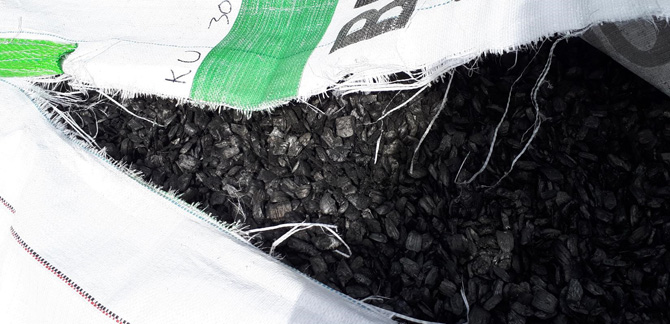BIO-REACT: Biochar reactors to purify forest runoff water in managed peatland forests – efficiency of novel biochar feedstocks
Stora arealer torvmark har dränerats genom dikning i Sverige. Dikesrensning utförs ofta efter slutavverkning när grundvattennivåerna stiger. I projektet testas biokol som ett sätt att filtrera dikesvattnet och förhindra utsläpp av näringsämnen och sediment.

Foto: Marjo Palviainen
Fifteen million hectares of northern peatlands have been drained for forestry worldwide and nearly 50% of these are in Fennoscandia. Ditch cleaning (DC) is generally used to maintain drainage and timber productivity, especially after final felling when groundwater levels rise because mature trees no longer use the water. But, DC can increase the export of sediment and nutrients to downstream waterways, degrading water quality, leading to eutrophication and algae-blooms in lakes, and impacting spawning habitat for fish. To meet water quality targets set by the European Union as well as meet forest biomass production and climate goals, we need new and innovative tools for reducing the impact of DC.
In our project, we will test a potential method of filtering ditch waters in the lab and field using emerging biochar source materials, or “feedstocks.” Biochar is made by heating organic material at high temperatures and low oxygen conditions and can be produced from different organic feedstocks such as wood or sewage sludge. Biochar has typically been added to soil to increase nutrients, carbon, and overall soil quality, but due to its large surface area, biochar has the potential to adsorb nutrients from water. The ability of biochar to act as a filter depends on the production temperature, but also the particle size and feedstock. In the laboratory, we will test nutrient adsorption rate and capacity of wood and sludge biochars of different sized particles. The best biochar will be tested in field conditions to understand how effective it is at filtering water draining recently cleaned ditches. Later, the biochar from the filters could be used as a soil amendment to recycle the captured nutrients, which can further increase forest production and carbon stocks.
Rapporter och publikationer
Ämne: Klimatanpassat & hållbart skogsbruk
Startår: 2021





